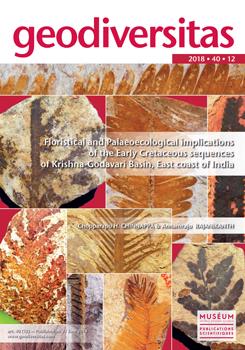Although a high number of extant beaked whale species (Cetacea, Odontoceti, Ziphiidae) live in the Southern Ocean and neighbouring areas, only little is known about the past occupation of the region by these highly specialized, deep diving and echolocating cetaceans. Recently, longline fishing activities along the seafloor at depths of 500–2000 m off the sub-antarctic Crozet and Kerguelen islands, Indian sector of Southern Ocean, resulted in the accessory “capture” of tens of ziphiid fossil cranial remains. Our description and comparison of the best-preserved and most diagnostic crania from this sample lead to the identification of more than eight species in at least seven genera: the hyperoodontines Africanacetus ceratopsis, Khoikhoicetus kergueleni n. sp., Hyperoodontinae indet. aff. Africanacetus, and Mesoplodon sp. aff. Mesoplodon layardii, the ziphiines Izikoziphius rossi and Ziphius sp., and the ziphiids indet. Nenga sp. aff. Nenga meganasalis and Xhosacetus hendeysi.
Unsurprisingly, with at least four species in common (A. ceratopsis, Izikoziphius rossi, X. hendeysi, and Ziphius sp.), the assemblage displays high similarities with assemblages described from deep-sea deposits off South Africa, providing thus new data on the palaeogeographic distribution of several extinct species and indicating a roughly similar geochronological age for at least a part of the assemblages. The limited amount of data available points to a pre-Pliocene age for a large part of the Crozet-Kerguelen assemblage, suggesting a relatively early, Miocene colonization of the Southern Ocean by crown ziphiids. Contrastingly, 14C radiometric dating of two specimens of Mesoplodon sp. aff. Mesoplodon layardii yielded latest Pleistocene-earliest Holocene ages. These results reveal the presence either of an extinct species of Mesoplodon in the Southern Ocean only a few thousands years ago, or of an up-to-now unidentified extant species closely related to the strap-toothed whale M. layardii.





